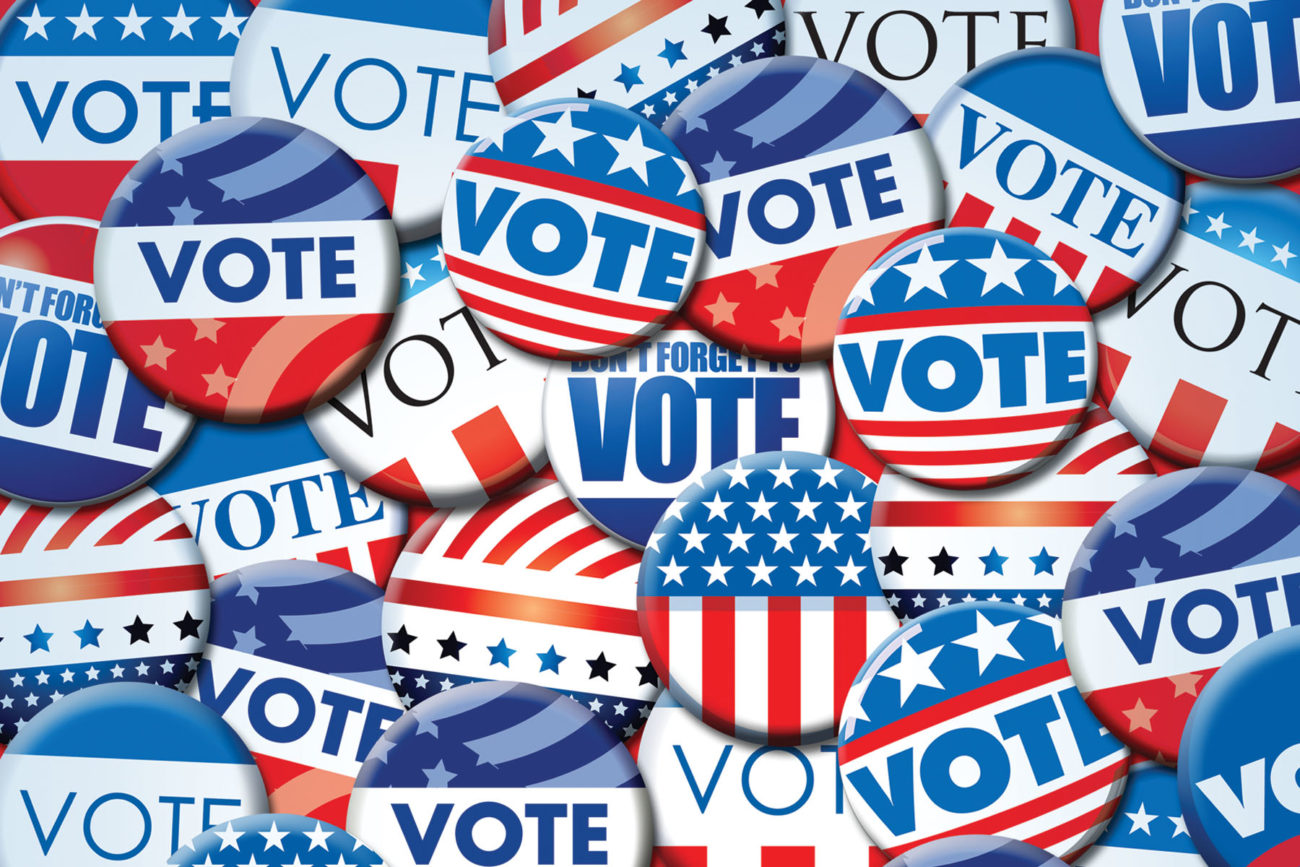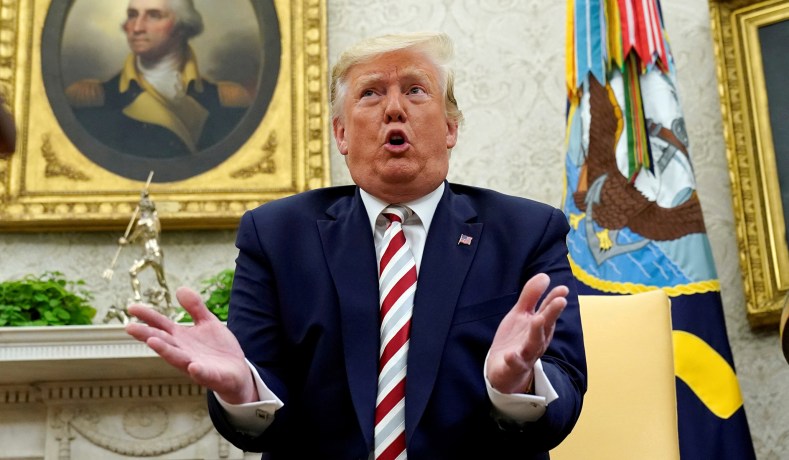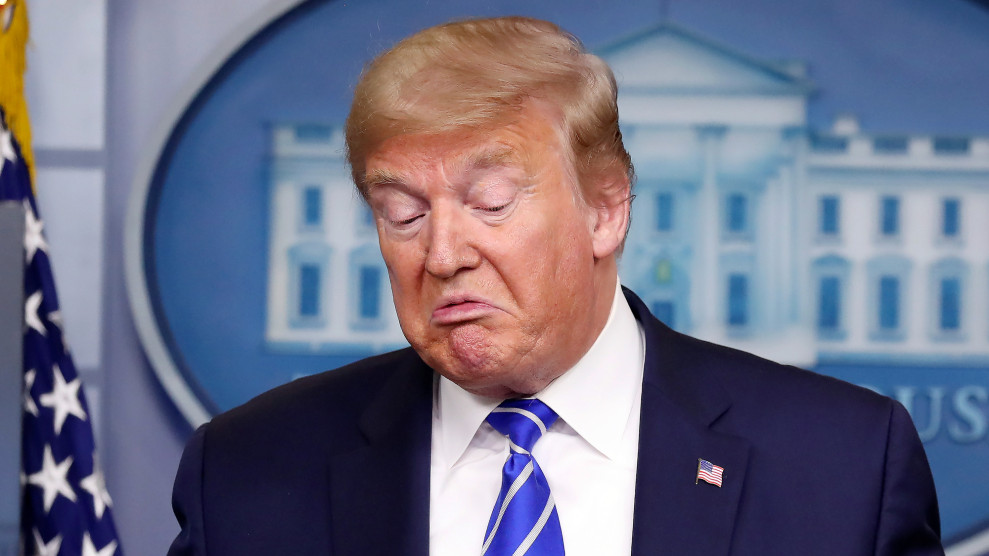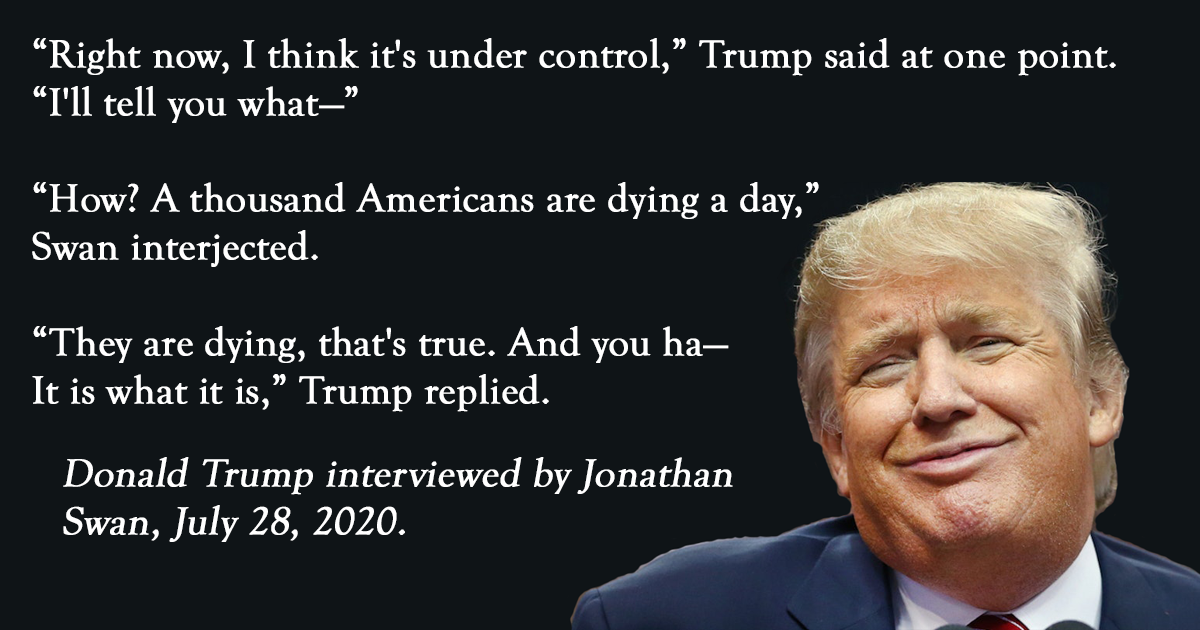On election night 2016 I was camped out by the teevee with my trusty laptop. I had set up an Excel file so that I could quickly monitor the Electoral College tally as states were called. I had figured which states were “pre-ordained” for both candidates and which were not and had these in separate columns. And as states were called, it soon became clear that Clinton was in trouble. Somewhere between 9:30 and 10:00 central time the column tallies were telling me Hillary Clinton could not possibly win. The race was called by media a little before 2 am EST, but it by then it had been obvious for hours that Clinton had lost.
As much as I want a cathartic night in which Trump is crushed in a single evening, that’s probably not going to happen this time. And the reason for that is partly illustrated by the 2018 midterm vote. On election night I was disappointed that the hoped-for blue wave hadn’t materialized. But over the next few days we learned that Dems actually had done pretty darn well. Matt Yglesias:
The narrative that congealed election night before polls had even closed on the West Coast was that while Democrats may have taken the House, they also underperformed relative to expectations and the hoped-for blue wave had turned into, in the words of columnist Nick Kristof at the New York Times, “only a blue trickle.”
This was a questionable interpretation at the time it was offered, but subsequent events have shown it to be almost entirely a psychological illusion based on timing.
Like in any election, Democrats both won some squeakers and lost some squeakers. They overperformed expectations in some races and underperformed them in others. And in 2018, it happens to be the case that Democrats got some of their most disappointing results in East Coast states with early closing times, while the GOP’s biggest disappointments came disproportionately in late-counting states.
Consequently, what felt to many like a disappointment as of 11 pm Eastern time on election night now looks more and more like a triumph.
It’s worth reading Yglesias’s column all the way through, because a lot of it applies to what we’re about to experience in November. For example, he wrote, states with the earliest poll closings tend to be red; states with late poll closings and a lot of mail-in votes to count tend to be blue. It is possible — nay, probable — that the early votes reported on November 3 will favor Trump, even if he goes on to lose. And with a whole lot more people voting by mail than ever before, it could be a few days before we know the winner.
At The Atlantic, David Graham calls the phenomenon of late Democratic victories the “blue shift.”
This sort of late-breaking Democratic vote is the new, though still underappreciated, normal in national elections. Americans have become accustomed to knowing who won our elections promptly, but there are many legitimate votes that are not counted immediately every election year. For reasons that are not totally understood by election observers, these votes tend to be heavily Democratic, leading results to tilt toward Democrats as more of them are counted, in what has become known as the “blue shift.” In most cases, the blue shift is relatively inconsequential, changing final vote counts but not results. But in others, as in 2018, it can materially change the outcome.
Although it is slowly dawning on the press and the electorate that Election Day will be more like Election Week or Election Month this year, thanks to coronavirus-related complications, the blue shift remains obscure. But the effect could be much larger and far more consequential in 2020, as Democrats embrace voting by mail more enthusiastically than Republicans.
And here’s the problem:
If the public isn’t prepared to wait patiently for the final results, and if politicians cynically exploit the shifting tallies to cast doubt on the integrity of the vote, the results could be catastrophic.
Again, this is almost certain to happen. So we need to be prepared, and we need to do whatever we can do to prepare the public for this.
Imagine that as November 3, 2020, ticks away, President Donald Trump holds a small lead in one or more key states such as Pennsylvania—perhaps 10,000 or 20,000 votes—and seems to have enough states in his column to eke out an Electoral College win. Trump declares victory, taunts Joe Biden, and prepares for a second term. But the reported results on Election Night omit tens of thousands of votes, including provisional ballots and uncounted mail-in votes. Over the coming days, as those votes are counted, Trump’s lead dwindles and eventually disappears. By the end of the week or early the next, Biden emerges as the clear victor in Pennsylvania—and with that win, captures the race for the presidency.
If that’s how things unfold, Trump is unlikely to take defeat snatched from the jaws of victory graciously. He has already spent months attempting to delegitimize the election system. So imagine that he instead cries fraud and insists he’s the target of a criminal Democratic coup. What if he encourages his supporters to take to the streets, where there are violent clashes between partisans? He might even urge the Republican-led Pennsylvania General Assembly to submit a slate of Trump-backing electors, citing the Election Day returns, even if the full tally clearly shows Keystone State voters chose Biden.
The only way that’s not going to happen is if the results are such a landslide that it’s obvious on election night, or some time the next day, that Biden is the winner. But the longer the vote count drags out, the more likely Trump will find a way to seize another term even if he, eventually, clearly loses the election.
Imagine this election night scenario: With a decisive number of mail ballots yet to be tallied, President Donald Trump enjoys a narrow lead over Joe Biden. But before all the votes can be counted — a process that could take days — Trump declares victory, citing purported irregularities with mail-in votes.
You can even picture Trump insisting that the preliminary election night tally must stand as final with a tweet that reads similarly to this one he posted in November 2018, when Florida’s US Senate and gubernatorial elections were still undecided:
The Florida Election should be called in favor of Rick Scott and Ron DeSantis in that large numbers of new ballots showed up out of nowhere, and many ballots are missing or forged. An honest vote count is no longer possible-ballots massively infected. Must go with Election Night!
— Donald J. Trump (@realDonaldTrump) November 12, 2018
So, yeah, that’s what he will do. He’s done it before.
“That is my nightmare scenario,” said Paul Gronke, professor of political science at Reed College in Portland and director of the Early Voting Information Center. “We gotta slow down. Trump’s gonna be tweeting, the media, you, all of your counterparts, have to slow down. Because he’ll claim victory, or he’ll start to claim malfeasance and fraud, lawyers will be climbing into airplanes and arriving in all these small jurisdictions, and it will be not good.”
And you know that if it turns out that Democrats take leads based on mail-in ballots, Trump and the rest of the Republican party will be crying foul. It’s also entirely possible that the team of Trump cronies now running the Postal Service will manage to lose a whole lot of ballots, or else see to it that they are not postmarked or delivered properly.
And this takes us to Jamelle Bouie in today’s New York Times:
The only way to prevent this scenario, or at least, rob it of the oxygen it needs to burn, is to deliver an election night lead to Biden. This means voting in person. No, not everyone will be able to do that. But if you plan to vote against Trump and can take appropriate precautions, then some kind of hand delivery — going to the polls or bringing your mail-in ballot to a “drop box” — will be the best way to protect your vote from the president’s concerted attempt to undermine the election for his benefit.
He’s right.
Trump is desperate to hold on to power, but he probably can’t win a fair fight. His solution, then, is to do everything in his power to hinder the opposition and either win an Electoral College majority or claim victory before all the votes have been counted.
A key element of Trump’s strategy is to undermine the Postal Service’s ability to deliver and collect mail. The president’s postmaster general has removed experienced officials, implemented cuts and raised postage rates for ballots mailed to voters, increasing the cost if states want the post office to prioritize election mail. And Politico reports that Trump’s aides and advisers in the White House have been searching for ways to curb mail-in voting through executive action, “from directing the Postal Service to not deliver certain ballots to stopping local officials from counting them after Election Day.” …
…Earlier this year, a group of more than 100 people — Republicans, Democrats, senior political operatives and members of the media — gathered to role play the November election, using predetermined rules and procedures. “In each scenario other than a Biden landslide,” writes Nils Gilman of the Berggruen Institute, who helped organize the exercise, “we ended up with a constitutional crisis that lasted until the inauguration, featuring violence in the streets and a severely disrupted administrative transition.”
There you have it. To head off the worst outcomes, Trump must go down in a decisive defeat. He’s on that path already. The task for his opponents is to sustain that momentum and work to make his defeat as obvious as possible, as early as possible. The pandemic makes that a risk, but it’s a risk many of us may have to take.
See also Andy Kroll at Rolling Stone. There are steps the states could take to make the mail-in ballots more secure and the counting faster, but that would cost money the states don’t have right now. This is probably a major reason Republicans don’t want to include more money for states in future pandemic relief bills.
We all need to think hard about this. People with health vulnerabilities in high-risk areas may have no choice but to vote by mail, and that’s understandable. But otherwise I strongly urge everyone to consider voting in person, if you can.










